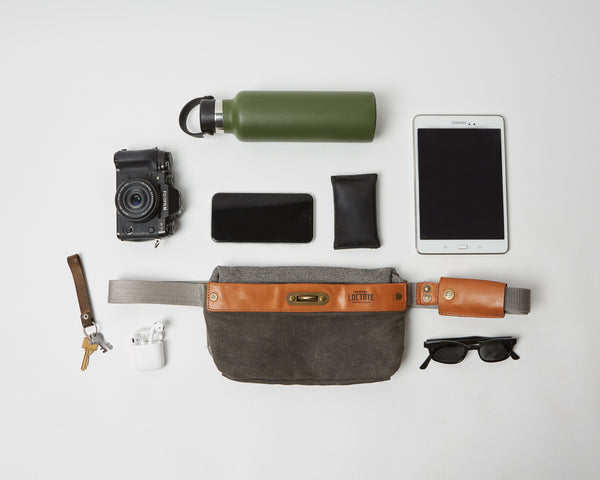The Spring Tune Up - How to Prepare Your Bike for the Season After a Long Winter in Storage
Spring has officially sprung and the warmer weather is just around the corner. This means it’s time to pull your bike out of storage, dust it off and give it a loving tune-up in preparation for the season ahead. As it’s probably been a while since your last cycle, it’s important to give your bike the once over and make sure everything is lubed up and looking lush before hitting the trails. Whether you ride a mountain bike, townie, or road riding machine, these 11 steps are sure to have your bike in tip-top shape this season.
1. Wash Your Bike
Wipe down your entire bike with a damp rag, starting from the handlebars, working your way back. This will help keep the rag clean for as long as possible before reaching the oily components at the rear. Disconnect the wheels from the frame and clean between each of the sprockets or cassettes, spokes, hubs, and rims (an old toothbrush is also very handy for this). Tip: Use a small amount of dishwashing liquid and water to clean persistent grime.
2. It’s Time For Your Frame’s Closeup
Using a flashlight, methodically inspect the entire frame of your bike looking for any cracks and dents, particularly around joints and welds. If you find any excessive wear, take it to your local bike shop for a professional inspection as problems with the frame can easily become quite serious, very quickly.
3. Give Your Brakes a Manicure
Make sure there is enough material left on the brake pads and check for damages or imperfections. If they’re looking a bit grimy, give them a couple of passes with some rough sandpaper to get them looking fresh. If you have hydraulic brakes, check the fluid is topped up and the system is free of air.
4. Catchin’ Cables
Check the brake and shifting cables for fraying and dirt and make sure they haven’t stretched excessively. If any of these things have occurred, you will most likely have to replace them. Remember to pay particular attention to where the cables connect to other components as this is where frequent bending can often cause decay.
5. Spin Your Wheels of Fortune
Check that the wheel bearings are properly adjusted and that they spin freely. Reattach the wheels to your bike and check their alignment, both wheels should be inline with the frame and each other when looking down the length of your bike. Next, give the spokes a squeeze to check the tension on both wheels. The spokes should move slightly with reasonable force but not wobble excessively. Lastly, check the tire pressure and inflate to the recommended PSI.
6. Don’t Let Your Chain Be the Weakest Link
Closely inspect the chain to make sure all of the links are aligned and none of them are twisted or stiff. Put the chain back on the sprockets and cassette if you haven’t already and apply a moderate amount of chain lube whilst pedalling backward to get your gears going. Make sure to wipe off any excess lube to prevent the collection of dust and dirt. Tip: If you notice any surface rust, use a fine wire brush to remove it.
7. Headset Help
With the front wheel in the air, turn the handlebars left and right to check the adjustment of the headset. If it feels like it’s stepping or makes a ratchet movement, it’s too tight. If you feel the handlebars moving backward and forwards as well as side to side, then it’s too loose. Use an allen/hex key inserted into the top of the stem to adjust it either way.
8. Pedal Power
Flick each of your pedals to make sure they are spinning freely and the bearings aren’t worn out. Check the grip pegs for excessive wear, if they are worn down, it’s time to replace your pedals. Make sure your crank arms are tight and there are no creaking or weird noises when you pedal. If there is, this could be a sign that it’s time to replace the bottom bracket.
9. Shifting Through the Gears
With a stand (or the help of a friend), lift the rear wheel off the ground, turn the pedals, and shift through all of the gears to ensure they are changing smoothly. Make sure that the chain doesn’t jump off or rub on anything in top or bottom gears. The derailers should also be straight, inline and greased.
10. Lube it Up
Add lubricant to all pivot points such as brake levers, pedals, gears, and shifters. For suspension bikes and wheels, make sure that all bearings and bushes are correctly greased.
11. Take it For a Test Ride
Now it’s finally the moment you’ve been waiting for, it’s time to take your bike out for this season’s maiden voyage. Before heading out on an epic adventure though, try out your tune-up in a local area to make sure your bike hasn’t developed any new quirks during its time in winter storage.















